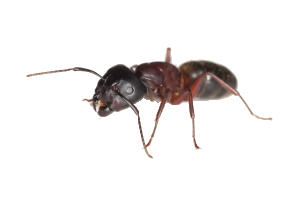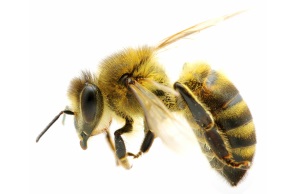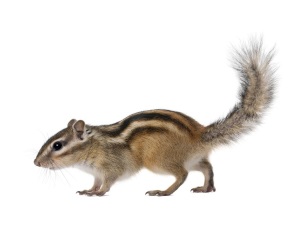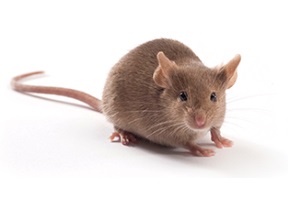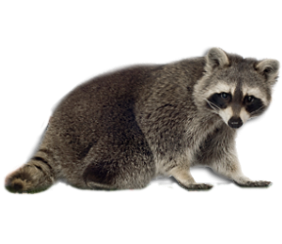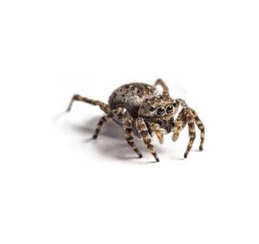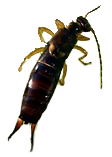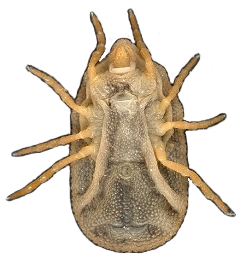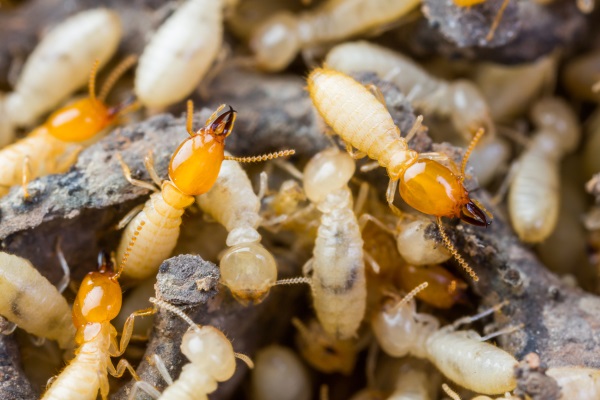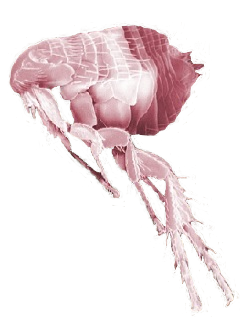Milwaukee Exterminator Helps You Identify Pests in Your Home
Contact our Milwaukee exterminator if you identify an infestation in your home or business from a pest below.
Pest Identification Guide
Use our Pest Identification Guide to figure out what kind of pests we’re dealing with, where they like to live, whether or not they’re harmful and how to prevent an infestation.
If you have any of these pests in or around your home (like squirrels!), contact our Milwaukee pest control experts at A-Landlords Pest Management today. Our experienced and knowledgeable exterminators can answer any questions you may have and eliminate your pest problem quickly. Rather than risk making the situation worse by trying to get rid of the pests yourself, call A-Landlord’s Milwaukee pest and rodent control experts to end your problem now.
Field Ants
How to Identify Field Ants
Appearance:
- 6 legs
- Segmented body with an unevenly rounded profile
- Pale yellow, reddish brown, or black
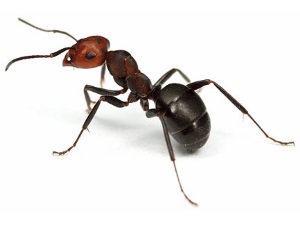
- 1/8 to 3/8 inch long
Habitats:
- Mounds of plant material
- Often near trees
- Shrubs
- Rocks
- Sometimes in sidewalk cracks or along foundation walls
- Field ants rarely nest in homes
Threat:
- Field ants may bite and spray painful formic acid into the wound
Preventing an Infestation:
- Store firewood at least 15 feet away from the house
- Avoid having mulch up against the foundation
- Keep shrubbery well-trimmed
Carpenter Ants
How to Identify Carpenter Ants
Appearance:
- 6 legs
- Segmented body
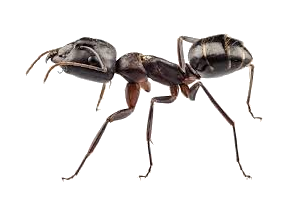
- Black, red, brown, or yellow
- ¼ to 3/8 inch long
Habitats:
- Indoors or outdoors in damp or damaged wood
- Their burrowing leaves frass (sawdust) outside the nest
Threat:
- Gain entry through wet wood
- Build paths through dry wood, causing structural damage
Preventing an Infestation:
- Keep your home and yard free of damp wood
- Keep tree branches cut back from the house
Pavement Ants
How to Identify Pavement Ants
Appearance:
- 6 legs
- Segmented oval body
- Dark brown, black
- 1/8 inch
Habitats:
- In walls, insulation, and floors
- Outdoors, under stones, and in pavement cracks
Threat:
- Pavement ants can contaminate food
Preventing an Infestation:
- Keep counters and kitchens free from spills and crumbs
Bed Bugs
How to Identify Bedbugs

Appearance:
Adults:
- 6 legs
- Flat oval body
- Mahogany
- ¼ inch
Nymphs:
- Nearly colorless
- 1.3mm to 5mm
Habitats:
- Beds and other furniture
- Cracks in the floor and walls
- May hide in suitcases, boxes, and shoes
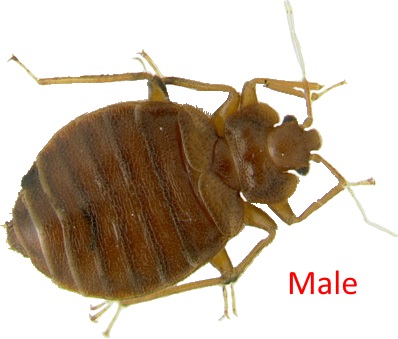
Food:
- Bed bugs feed on blood and need it to reproduce
Reproduction:
- Process called traumatic insemination
- Sperm remains in female body for 4-6 weeks
- Female lays ~5-7 eggs per week
- Eggs hatch in 6-17 days
- Insemination process makes female avoid males
- More likely to hitchhike on clothes and people
Threat:
- Bedbugs bite and cause red, itchy welts
- They do not transmit diseases
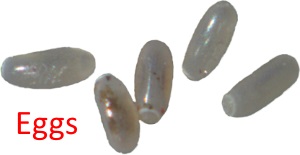
Preventing/Detecting an Infestation:
- Examine second-hand furniture before bringing it home
- Protect suitcases with a trash bag while travelling
- Check bedsheets for blood spots.
Learn More About Bed Bug Infestations:
- Bed Bug Infestation Site Reports
- DIY Bed Bug Remedy Fails
- Milwaukee Bed Bug Exterminators Provide Exceptional Pest Control Services
- Milwaukee Pest Management Experts Deliver Valuable Bed Bug Knowledge
- Milwaukee Bed Bug Infestations
- Milwaukee Exterminator Keeping Your Home and Business Safe from Unwanted Pests
- Bed Bug Traveling Tips
Bumble Bees
How to Identify Bumble Bees
Appearance:
- 6 legs
- Oval shape
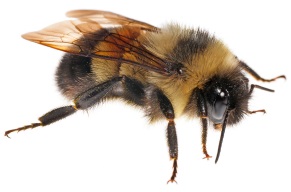
- Black and yellow striped
- Fuzzy
- 1 inch
Habitats:
- In the ground or in trees
- Around patios or decks
- Sometimes in attics or chimneys
Threat:
- Bees are aggressive and will sting if threatened
- Bumble bees can sting more than once
- People who are allergic to insect stings may have a severe reaction
Preventing an Infestation:
- Carefully inspect potential nesting areas and get rid of harborage materials
More Information:
As the name suggests, bumblebees cause a distinctive hum. Despite a common misconception, bumblebees are perfectly capable of flight. Bumblebees are currently in decline all around the world. As pollinators, this is bad news for farmers and gardeners alike. Conservationists are working to preserve their population before it’s too late.
Honey Bees
How to Identify Honey Bees
Appearance:
- 6 legs
- Oval shape
- Golden yellow with brown bands
- ½ inch
Habitats:
- Honeycombs in trees
- Sometimes in attics or chimneys
Threat:
- Honey bees can only sting once
- The sting can be extremely painful if the stinger is not removed
- People who are allergic to insect stings may have a severe reaction
Preventing an Infestation:
- Carefully inspect potential nesting areas and get rid of materials the bees could use to build their nest
- Honeycombs can be messy to remove
German Cockroaches
How to Identify German Cockroaches
Appearance:
- 6 legs; oval shape
- Light brown with dark stripes on the back
- ½ to 5/8 inch
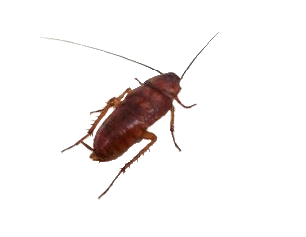
Habitats:
- Warm, humid places near food
- Kitchens and bathrooms
Food:
- Favorites: starches, decaying meats, sweets, fatty foods
- Will settle for almost any human/pet/processed foods
- Will also eat adhesives and products with adhesives in them
- Can live for up to 30 days without food
- Can live for 2 weeks without hydration
Threat:
- German cockroaches can spread bacteria, parasitic worms and other human pathogens
- They can cause allergic reactions and intensify asthma attacks, especially in children
Preventing an Infestation:
- Keep your kitchen clean
- Vacuum frequently
- Avoid moisture buildup
More Information:
German cockroaches are the most common cockroach family pest. They are easily mistaken for the Asian cockroach and are nearly identical. Asian cockroaches are able to fly gracefully while German cockroaches have trouble flying at all. They cannot survive the cold but manage to survive by finding small, heated areas.
Learn more about cockroaches & pest control services.
American Cockroaches
How to Identify American Cockroaches
Appearance:
- 6 legs
- Oval shape
 Reddish brown, yellowish markings behind the head
Reddish brown, yellowish markings behind the head- Up to 2 inches
Habitats:
- Basements
- Sewers
- Drainage systems
Food:
- Omnivores - eat plants, meats, and other items
- Cosmetics, plant shoots, soaps, decaying fruits
- Sweets and starchy items such as adhesives
Threat:
- Can spread bacteria, parasitic worms, and other human pathogens
- Can cause allergic reactions and intensify asthma attacks, especially in children
Preventing an Infestation:
- Keep your kitchen clean
- Vacuum frequently
- Avoid moisture buildup
Chipmunks
How to Identify Chipmunks
Appearance:
- Gray, reddish brown fur with dark and light stripes down the back and tail
- 7 to 10 inches
Habitats:
- Holes in the ground
- Sometimes under patios
- May move into buildings
Threat:
- Burrowing causes structural damage and destroys plants
Preventing an Infestation:
- Remove debris and wood piles
- Put away pet food to avoid attracting the chipmunks
More Information:
Chipmunks are omnivores, eating everything from acorns to bird’s eggs. If a bird nest has recently been raided, it might be chipmunks to blame. Chipmunks do not need to hibernate and remain active in winter. Like larger squirrels, chipmunks are capable of climbing trees in search of food.
Mice
How to Identify Mice
Appearance:
- Short dark gray or brown fur, lighter colored stomach
- Thin tail
- 3½ to 7½ inches
Habitats:
- Dark
- Secluded areas in structures or outdoors
- Nests are often made of paper products, fabric, and packing materials
Threat:
- Mice can contaminate food
- Cause structural damage
- Chew on electrical wires
- They can carry and transmit serious diseases, along with fleas, mites, ticks and lice
Preventing an Infestation:
- Keep the building clean
- Fix broken windows
- Repair cracks in the foundation or walls
- Remove potential nesting materials, such as newspapers and cardboard boxes
Opossums
How to Identify Opossums
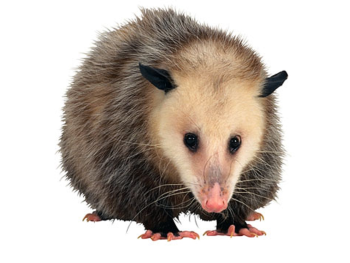 Appearance:
Appearance:
- Similar in size to a house cat
- Gray in color
- White face
- Hairless tail
- 1-3 feet
Habitats:
- Urban and suburban areas
- Opossums den anywhere warm and dry
Threat:
- Being nocturnal and cautious, encountering an opossum is rare
- When threatened, they will “play dead”
- A survival tactic that renders them immobile from half an hour to far longer
- This involuntary reaction renders them harmless
- They can even be moved without being woken up
- If faced with a pet, opossums can bite with sharp teeth
Preventing an Infestation:
- Opossums are opportunistic and constantly relocating their dens
- Make sure to seal garages and patio doors to stop them from getting in to your home
Raccoons
How to Identify Raccoons
Appearance:
- Gray and brown with black “mask” over the eyes
- Ringed tail
- 2 to 3 feet
Habitats:
- Dens in forested areas near a water source or in attics or chimneys
Threat:
- Raccoons can cause property damage when trying to enter a home
- They often dig through garbage
- They can carry rabies.
Preventing an Infestation:
- Store garbage cans in protected areas
- Use animal-proof covers
- Repair loose siding or shingles
Rats
How to Identify Rats
Appearance:
- Brown, black, gray fur with lighter stomach
- 6 to 9 inches
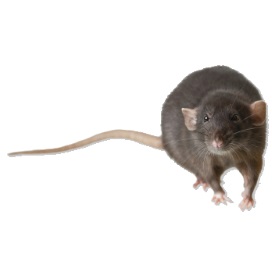
- 6 to 10 inch tail
Habitats:
- Burrows under buildings
- Near ponds
- In garbage dumps
- Sometimes in roofs or attics
Threat:
- Bite
- Transmit diseases
- Contaminate food
- Carry fleas and mites
Preventing an Infestation:
- Keep the building clean
- Remove potential nesting materials, such as newspapers and cardboard boxes
- Keep garbage tightly covered
- Clear away any fruit from trees in the yard
More Information:
Rats are usually larger than mice, though a small rat might appear to be mouse due to similar fur patterns. Wild rats can carry Salmonella. It is very important to note that there are differences between wild rats and pet (“fancy”) rats. Pet rats tend to have more color variety, such as white and brown, along with different fur patterns. A single pet rat is not a sign of a potential rat infestation.
Skunks
How to Identify Skunks
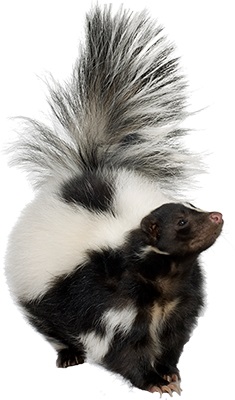
Appearance:
- Black or dark brown with white or cream stripes down the back and tail
- 16 to 37 inches
Habitats:
- Dens underground
- In brush piles or logs
- Under decks, porches, or buildings
Threat:
- Skunks can spray as far as 10 feet
- The spray can cause nausea, severe burning, and temporary blindness
- They can carry diseases like rabies
Preventing an Infestation:
- Seal off possible entrances under porches with sturdy wire mesh buried at least 6 inches underground
More Information:
Although skunks are not always black and white, they have what is known as warning coloration due to their smelly defense mechanism. This vibrant display warns predators and people to stay away. Unfortunately, dogs will still often try to attack or play with skunks, resulting in getting sprayed.
Voles
How to Identify Voles
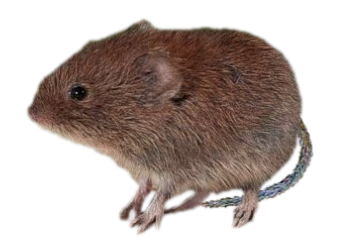 Appearance:
Appearance:
- Usually gray
- Ranging from 3 to 9 inches long
- Stouter and shorter build than mice
Habitats:
- Burrows in fields or lawns
Threat:
- Very little physical threat to humans
- Can do a lot of damage to yard landscaping
- Like other rodents, voles have potential to carry diseases
Preventing an Infestation:
- Keep your lawn well-maintained
- Voles will hide under any dense vegetation or in piles of mulch
- Avoid using too much mulch where they can hide
Milwaukee Vole Exterminator & Removal Services
Affordable & Eco-Friendly Solutions
A-Landlords Pest Management understands the frustration and damage voles can cause to your property. With our expert team and proven methods, we are committed to eliminating voles quickly and efficiently from your premises, guaranteeing protection for your Milwaukee residence or business.
With over 35+ years of experience, we've earned a reputation as the Milwaukee area’s best rodent control company. Regain control of your home and contact us today!
How to Identify Voles

Other Names: meadow mice, field mice
Colors: black, brown or gray
Size: shorter and stouter compared to mice, about 3 to 9 inches long
Description: blunt noses, dense fur and a tail with no fur
Habitat: burrows in fields or lawns
For help identifying other pests, visit our Pest Identification Guide.
Signs of Vole Infestation
Voles cause landscape damage by creating pathways underground. Common signs your residence or business has a vole infestation include:
-
Long trails of missing grass
-
Small holes
-
Chewed tree bark or shrubs
-
Patches of dead grass
How to Prevent Vole Infestations
Prevent vole infestations by keeping your lawn well-maintained. Voles hide in dense vegetation and mulch piles, so avoid creating hiding and burrowing spots!
How to Get Rid of Voles
There are several ways to remove voles:
-
Trapping: Place live traps or snap traps near vole tunnels to capture and remove voles.
-
Repellents: Voles can be deterred using repellents such as garlic-based, hot pepper and castor oil sprays. Fragrant herbs, such as mint, can also drive moles away.
-
Barriers: Place wire mesh around your tree trunks and in the ground.
Trust our expertise and contact us for efficient, professional vole removal!
A-Landlords is Milwaukee’s Trusted Pest Control
We provide affordable extermination and removal services for rodents and pests. At A-Landlords, we begin with a thorough assessment of problem areas and entry points on your property to develop a tailored extermination strategy. We utilize the latest industry techniques and prioritize the safety of your family and pets. Contact us today for prompt extermination services to guarantee pest removal with lasting results
We are proud to provide thorough vole extermination and pest control services in the greater Milwaukee area including Mount Pleasant, Caledonia, Oak Creek, Franklin, Burlington, Racine, Wind Point, Yorkville, Sturtevant, Union Grove and beyond!
Squirrels
How to Identify Squirrels
Appearance:
- Usually gray
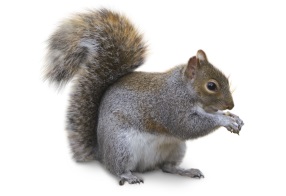
- 6 to 15 inches
- 4 to 14 inch fluffy tail
Habitats:
- Mainly trees
- May invade structures in the winter
Threat:
- Squirrels rarely pose a health threat even when living attics
- Outdoors, they can damage electrical and telephone cables
Preventing an Infestation:
- Seal up possible points of entry around the house
- Keep tree branches away from the roof
More Information:
There are multiple squirrel breeds in Wisconsin. The most common are the gray squirrel and the red squirrel. The gray squirrels are larger than the red and more aggressive when claiming territory. Gray squirrels will have white underbellies while red squirrels have brown fur there. It is only gray squirrels that are able to climb down trees headfirst.
Bold Jumping Spiders
How to Identify Bold Jumping Spiders
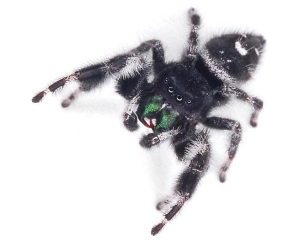 Appearance:
Appearance:
- 8 legs
- Large abdomen
- Black with white/orange spot on back
- 4-20 mm
Habitats:
- Exterior walls
- Rocks and logs
- Open woodlands
Threat:
- Presents zero threat to humans under normal circumstances
Preventing an Infestation:
- Call exterminator to spray perimeter of house
Common House Spiders
How to Identify Common House Spiders
Appearance:
- 8 legs
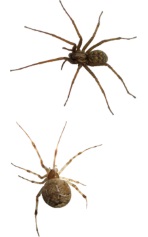
- Yellow-brown, dirty white abdomen with dark stripes
- 1/8 to 5/16 inch
Habitats:
- Tangled webs
- Sometimes in houses
- Often in garages, sheds, barns and warehouses
- Near light sources to attract prey
Threat:
- Common house spiders pose no threat to humans
Preventing an Infestation:
- Seal cracks and use screens on doors and windows
- Use a vacuum to get rid of spiders, egg sacs, and webs
Jumping Spiders
How to Identify Jumping Spiders
Appearance:
- 8 short legs
- Compact
- Usually black with pale markings
- 1/8 to ¾ inch
Habitats:
- Loose, saclike webs
Threat:
- While jumping spiders may bite
- The bite is not poisonous
Preventing an Infestation:
- Seal cracks and use screens on doors and windows
- Remove outdoor harborages
More Information:
Jumping spiders are considered easy to identify compared to other arachnids. They have larger legs in the front, causing them to somewhat resemble crabs. They also have eyes that distinctly face forward rather than all around their head like other spiders.
Bald-Faced Hornets
How to Identify Bald-Faced Hornets
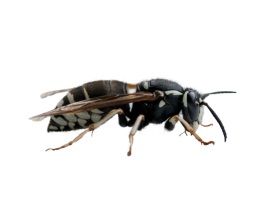 Appearance:
Appearance:
- 6 legs
- Long black bodies with white pattern
- ½ to 5/8 inch
Habitats:
- Paper nests at least three feet off the ground
- As large as 14 inches wide and 24 inches long
Threat:
- Sting repeatedly with venom, causing pain, itchiness, and swelling for about 24 hours
- Stings can cause allergic reactions
Preventing an Infestation:
- Do not attempt to remove a bald-faced hornet nest
- The wasps are aggressive, and likely to sting
Yellow Jackets
How to Identify Yellow Jackets
Appearance:
- 6 legs
- Black and yellow bands
- 3/8 to 5/8 inch
Habitats:
- Paper nests made of chewed cellulose
- In the ground
- Attics
Threat:
- Yellow jackets are territorial and will sting repeatedly
- Stings can cause allergic reactions
Preventing an infestation:
- Keep trash cans covered
- Avoid sweet-smelling perfumes and scents
More Information:
Yellow jackets are the type of wasp most likely to be confused with honey bees. The best way to tell them apart from bees is to note whether they have hair over their body. Unlike honey bees, yellow jackets do not transport pollen. Yellow jackets are also confused with hornets due to their similar builds. Hornets, however, are usually larger than yellow jackets.
Paper Wasps
How to Identify Paper Wasps
Appearance:
- 6 legs
- Brown with yellow markings
- 5/8 to ¾ inch
Habitats:
- Paper nests hang from trees
- Porch ceilings
- Leaves
- Attics and the tops of doorframes
Threat:
- Paper wasps are not as aggressive as bald-faced hornets or yellow jackets
- However, they will sting if they or their nest is disturbed
- Paper wasp stings can cause allergic reactions
Preventing an Infestation:
- Before doing yard work on shrubs, hedges, or trees, check for nests
- Use repellent oil to keep wasps away from wooden fences
- Do not attempt to remove a wasp nest on your own
Blowfly
How to Identify Blowflies:
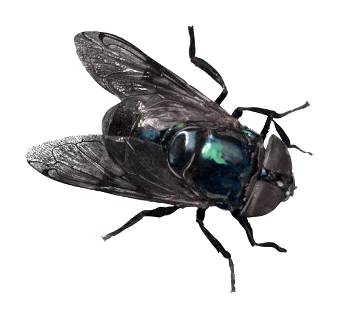
Appearance:
- ~1 cm
- Shiny black and blue metallic body
- 6 legs
Habitats:
- Blowflies make their homes wherever there is rotting meat (carrion)
Threat:
- Blowflies can spread disease from other animals to humans
- Many diseases can be carried on rotting, putrid meat
Preventing an Infestation:
- Keep all used meat scraps well covered and in the correct areas
- Make sure lids are on your garbage cans
- Make sure no mice or other animals have died in your walls
Crickets
How to Identify Crickets
Appearance:
- Distinctive long antennae
- Dull green and brown color
- Two sets of wings (front and back)
- Larger back legs for jumping
- 2 inches
Habitats:
- Trees
- Brush
- Grass
Threat:
- Relatively harmless to humans, though they are capable of biting
- Chirp excessively, causing annoyance, and scavenge uncovered food
Preventing an Infestation:
- Inspect all window screens to ensure there are no openings for crickets to enter
- Cover all food that might attract crickets, including dry dog food
Earwigs
How to Identify Earwigs
Appearance:
- 6 legs; brown with yellow or pale extremities
- Distinctive pincer like tail
- 7-50 mm
Habitats:
- Damp and dark spaces indoors
- Wooded areas with lots of debris
Threat:
- Earwigs are scavengers and will eat flowers, plants, and food that are left uncovered
- They can cause significant damage to foliage
- They are not known to carry any diseases that are harmful to humans
Preventing an Infestation:
- Check areas that might be dark and damp for potential eggs
- Common areas include trash receptacles, window frames, and outdoor furniture
Fruit Flies
How to Identify Fruit Flies
Appearance:
- 6 legs
- Ovoid body
- Translucent, yellow/brown
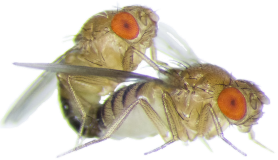 Red eyes
Red eyes- Black stripes across back
- Females ~ 2.5 mm
- Males ~ 2.0 mm
Habitats:
- Anywhere rotting food exists
- Drains
- Garbages
- "Empty" containers
Threat:
- Disease (rare)
- Annoying
Preventing an Infestation:
- Make sure all foods are sealed and properly stored when done using them
- Make sure you clean up all your food messes, including in your sink and garbage
House Centipede
How to Identify House Centipedes:
Appearance:
- 1-1.5 inches (body)
- Light brown
- Black lines running end to end
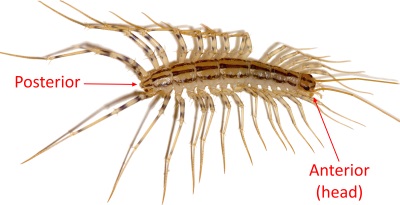 30 legs
30 legs
Habitats:
- Under boards, rocks, fallen trees (outside)
- Any cool, moist, dark space (inside)
Threat:
- Not life threatening
- Possesses venom glands and delivery system
- Rarely bites
- Bites usually cause mild irritation
Preventing an Infestation:
- Frequent house centipede sightings suggest plentiful of prey
- Examine building for abundance of arthropods
(silverfish, cockroaches, spiders, etc.)
Japanese Beetles
How to Identify Japanese Beetles
 Appearance:
Appearance:
- Shiny
- Metallic body
- 10- 15 mm
Habitats:
- Originally from Japan
- They often live in gardens in the eastern USA
Threat:
- Japanese beetles skeletonize plant leaves and flower buds, ruining gardens
- Being an invasive species to the United States, they lack natural predators to control their population
Preventing an Infestation:
- Catch Japanese beetles and place them in a bucket of soapy water
- Spray beetles with the soapy concoction
Ticks
How to Identify Ticks
Appearance:
- 8 legs
- Have a body larger than their head
- Commonly brown in color
Habitats:
- Leaf litter found in tall grass, woods, brush
Threat:
- Ticks bite and consume the blood of humans
- They are vectors for diseases, including Lyme disease, typhus, and tick paralysis.
Preventing an Infestation:
- Wear long sleeve clothing when working outdoors and check skin for ticks before coming inside
- Make sure to check pets as well
- If a tick is present on the skin and has already attached, remove the tick immediately with tweezers
- Control tick habitats by moving the lawn frequently, especially around wooded areas
Black Flies
How to Identify Black House Flies:
Appearance:
- ~1.3 cm
- Black with fur and bluish bald spots
 6 legs
6 legs- (Similar to house fly, but larger)
Habitats:
- Indoors during winter months
- Indoors during summer if enough food is inside
- Outside during warmer weather
- Often found near rotting food
Threat:
- Can spread disease in humans
- Cover large breeding areas and reproduce quickly
Preventing Infestation:
- Sadly, there isn't much we can do to prevent black fly infestations; however, we are great at ending infestations once they've begun
- Keep area clean and free of rotting foods/open containers.
Asian Lady Beetle
How to Identify Asian Lady Beetles
Appearance:
- Resembles the lady bug
- Orange or red in color with black spots or the reverse, black with red spots
- 5.5-8.5 mm
 Habitats:
Habitats:
- Fields and leaf piles during warm weather
Threat:
- Swarms of Asian lady beetles will infest a home during winter for a warm place to hibernate
- There are rare cases of people being allergic
- Creates an unpleasant smell and stain when dead
- Known to bite people
Preventing an Infestation:
- Check for any possible entryway the Asian lady beetle might find, including cracks in the foundation or torn window screens
- It is important to check before the first frost
Mosquitos
How to Identify Mosquitos
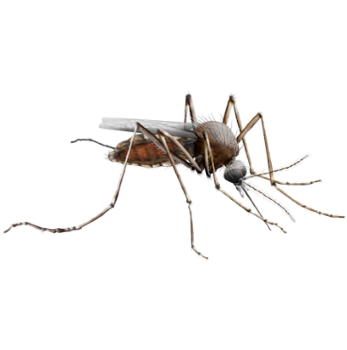 Appearance:
Appearance:
- 6 legs and one set of wings
- Resembles the midge
- Rarely exceed 16 mm in length
Habitats:
- Marshes
- Lakes
- Stagnant water
Threat:
- Their bites are irritable
- Mosquitos can harbor diseases such as West Nile virus, malaria, dengue fever, and yellow fever
Preventing an Infestation:
- Empty out watering pails
- Remove standing water from containers in your yard
- Keep gutters and drainage ditches clear after rain
- Wear long sleeve clothing while out at dawn or dusk
Termites
How to Identify Termites
Appearance:
- 6 legs
- Soft bodies, scissor-like jaws, can have four wings
- Creamy white to dark brown
- ¼ to 3/8 inch
Habitats:
- Underground colonies
- Moist secluded areas above ground
Threat:
- Termites are extremely destructive to wooden structures
Preventing an Infestation:
- Divert water away from the foundation of the house using gutters and downspouts
- Avoid contact between wood portions of the house and soil
Learn More About Termite Infestations:
Boxelder Bugs
How to Identify Boxelder Bugs
Appearance:
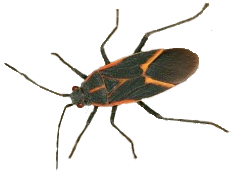
- 6 legs
- Flat oval body
- Red and black
- 1 cm - 1 in
Habitats:
- Summer - in the trees they feed on
- Winter - in the walls of your house
Threat:
- Kill your trees
- Annoying, bitter
Preventing an Infestation:
- Seal or spray repellent over the holes over your house's exterior
Learn more about Boxelder bug removal services.
Fleas
How to Identify Fleas
Appearance:
- 6 legs
- Longer back leg
- Flat shape
- Dark reddish-brown
- 1/12 to 1/6 inch
Habitats:
- Household pets and wild animals
- Shoes
- Pant legs
- Blankets
Threat:
- Flea bites usually cause painful, itchy red bumps
- They can transmit bacteria, diseases, and tapeworms, as well as cause allergic reactions
Preventing an Infestation:
- Clean and vacuum often
- Groom pets regularly
- Use flea treatments









 Bed Bug
Bed Bug Ant
Ant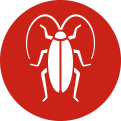 Roach
Roach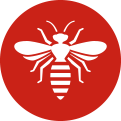 Wasp
Wasp Spider
Spider Rodent
Rodent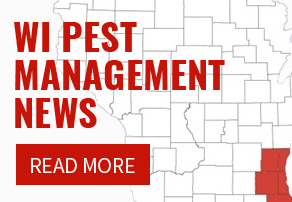



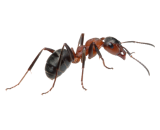



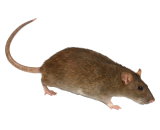


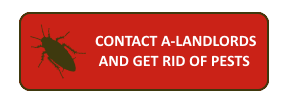
 Back to Top
Back to Top